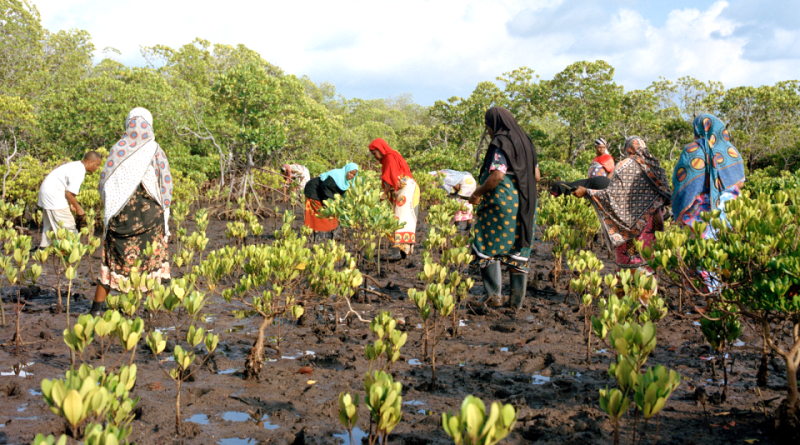The Himba and agriculture
The Himba and agriculture
The Himba are an indigenous population living mainly in the northern region of Namibia, Africa. They are known for their distinctive culture, traditional practices and semi-nomadic way of life.
The Himba are known for their semi-nomadic lifestyle, which involves the seasonal movement of livestock in search of pasture and water. This made them skilled shepherds.
The Himba are known for their traditional clothing, which often consists of goatskin or sheepskin clothing. They also use a mixture of red ocher and fat to grease their skin and hair, which gives them a distinctive red hue. This type of body ornamentation is very important in their culture.
Himba society is based on a complex social structure, with a chieftaincy system and a gender-based division of labor. Men and women have specific roles within the community.
The Himba have a traditional religion involving ancestor worship and a deep connection with nature. They believe that the spirits of ancestors influence their daily lives.
Their economy is mainly based on herding livestock, such as goats and cows. Livestock is central to their survival and livelihood.
Many Himba continue to live traditionally, far from modern conveniences such as electricity and running water. This traditional life has been preserved to the extent possible, although some communities may have been affected by modernisation.
Agriculture –
The Himba have a long history of nomadic living, moving with their livestock in search of pasture and water. Pastoralism has long been the main source of livelihood for the Himba, and livestock (mainly goats and cows) have been a key part of their economy and culture.
The Himba also practice subsistence agriculture, although to a much lesser extent than pastoralism. They mainly grow maize, millet, pumpkin and legumes. Crops are mainly carried out during the rainy season, when there is enough water to irrigate the fields.
These populations use traditional and sustainable agricultural techniques. The fields are prepared using rudimentary plows pulled by animals. The technique of itinerant farming is common, where the Himba move from field to field to preserve the fertility of the soil. This approach also helps to minimize environmental impact.
The land is of great cultural importance to the Himba. Their spirituality is deeply linked to nature, and they believe that the earth is sacred. They practice religious ceremonies and rituals to honor the land and seek the blessing of the spirits of the ancestors for the success of crops and livestock.
In recent decades, the Himba have faced challenges related to modernization and climate change. Population growth and pressure on land have led to a decrease in land available for pastoralism and agriculture. Furthermore, increasingly frequent droughts are putting a strain on their food and water resources.
Government and non-governmental organizations are working with the Himba to develop sustainable development programs, including irrigation projects, agricultural education and initiatives to improve food security. However, it is important to balance these efforts with respect for Himba culture and tradition.
In summary, the Himba have a long history of pastoralism and subsistence agriculture, with traditional practices rooted in their culture and spirituality. However, they face modern challenges related to demographic pressure, climate change and development, which require sustainable solutions that respect their traditions.
Agricultural tools and crops –
The Himba use simple hoes and plows to prepare the soil for planting. These instruments are often handmade using local wood and materials.
Planting of crops is done manually, with women throwing the seeds directly into the prepared soil.
The Himba are known for their ability to conserve water. They use drip irrigation systems, often with handmade containers, to efficiently supply water to their crops.
The main crops grown by the Himba include maize, millet, squash, beans, peanuts, and other plants adapted to the arid conditions of the region. These crops are essential for their livelihood.
The Himba raise livestock such as goats, sheep and cattle. Livestock provide milk, meat and hides, and are a key part of their economy and culture.
The Himba traditionally use food storage structures, such as huts or pens, to protect their crops and livestock from predators and the elements.
The Himba are known for their livestock management skills in a desert environment. They use seasonal grazing and follow livestock migration patterns to make the most of available resources.
Since cattle hides are important to the Himba, they use traditional tools to process and decorate the hides for practical and ornamental purposes.
It is important to note that the Himba are a people who have maintained many of their cultural traditions and practices despite environmental and social challenges. However, modernization is increasingly influencing their way of life, including agricultural and pastoral practices.
Guido Bissanti

